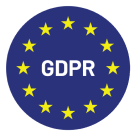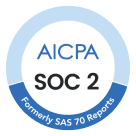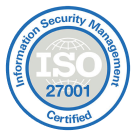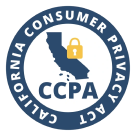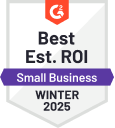Healthcare Call Center Benchmarks:
10 Key Examples of Metrics & KPIs

The average multi-practice healthcare call center receives 2,000 calls each day*. However, most clinics struggle to deliver satisfactory service at that scale, leading to loss of patients and revenue.
That’s where the need to track healthcare call center benchmarks comes in, as without them, you lack the visibility to make any meaningful improvements. As a result, you may experience efficiency issues and even legal troubles due to HIPAA non-compliance.
In this article, we’ll introduce you to the 10 most important healthcare call center metrics, including Average Speed of Answer and Customer Satisfaction Scores, to help you take full control of your business and deliver high-quality service to all who need it.
Key Takeaways:
- Healthcare call center benchmarks measure efficiency, patient satisfaction, and cost management to ensure high-quality service.
- Tracking benchmarks helps improve response times, reduce costs, and enhance patient experience, leading to better outcomes.
- Key benchmarks include First-Call Resolution (FCR), Average Speed of Answer (ASA), Call Abandonment Rate, and Customer Satisfaction (CSAT).
Call & Track Your Healthcare Metrics for 30 Days Free
Understanding Healthcare Call Center Benchmarks
Benchmarks can be easily understood as healthcare call center industry standards, defining a business’ expected average performance in a certain aspect of its operations via medical call center metrics, such as First-Call Resolution, Cost per Click, etc.
It’s important to mention that metrics are not the same as KPIs, although the terms are often mistakenly used interchangeably. So, what is a KPI in healthcare?
Key Performance Indicators (KPIs) are internally selected goals consisting of one or more metrics, targeting and measuring a vital part of the business. KPIs are typically set for predetermined periods (i.e., months, quarters, years, etc.) but can be long-term.
And finally, how to measure KPIs in healthcare. In a call center setting, you luckily don’t need much other than reliable call center software with a robust Analytics feature, a strategic approach, and carefully selected metrics. Speaking of which…
10 Essential Healthcare Call Center Benchmarks & Metrics
The most important call center metrics largely depend on your business niche and current organizational goals (KPIs). However, there are some that apply universally, such as the ones we’ll discuss in this section. They can be divided into:
Operational Efficiency Benchmarks
As the name suggests, these metrics focus on tracking, measuring, and improving the organization’s performance, particularly concerning agents’ efficiency and productivity. These include:
#1: First-Call Resolution (FCR)
What Is It?
FCR refers to the percentage of patient inquiries resolved during the very first call without requiring any additional follow-ups. FCR is very important, particularly for improving customer satisfaction, freeing up resources, and saving time.
Industry Benchmark: 52%
How to Improve It?
If you want to increase your FCR, you’ll need to train your agents to handle a wide range of inquiries well. You can enable their efforts further by equipping them with access to the caller’s contact details and past conversations, as well as skill-based routing.
#2: Average Speed of Answer (ASA)
What Is It?
As the name suggests, ASA refers to how long it takes an agent to answer an inbound call on average. Maintaining a low ASA score and delivering timely service is crucial for reducing caller frustration, call abandonment, and potential patient churn.
Industry Benchmark: 30 – 60 seconds
How to Improve It?
To lower ASA, optimize staffing levels to effectively cover peak hours. Leverage AI-powered call distribution to route calls efficiently and consider offering self-service options via chatbots and IVR for common inquiries to reduce call volume.
#3: Average Handle Time (AHT)
AHT tracks the total time an agent spends on a call, including talk time, hold time, and after-call work. You need to try to strike a good balance between calls being too short or too long to ensure patients receive high-quality service without losing efficiency.
Industry Benchmark: 3.38 minutes
How to Improve It?
If you want to lower AHT without sacrificing quality, streamline workflows by eliminating unnecessary steps. Use AI notes and call tagging features to automate after-call work, give agents access to patient information, and measure the Talk-to-Listen Ratio.
#4: Agent Occupancy Rate
Agent Occupancy Rate measures how much time agents spend handling calls or related tasks versus being idle. While you may think shooting for 100% would be the right move, you’d be shooting yourself in the foot by causing burnout and agent churn.
Industry Benchmark: 75-85%
How to Improve It?
To optimize agent occupancy, use a WFM to forecast demand and schedule shifts effectively. You can also leverage predictive dialers to anticipate future call volumes and assign agents to call queue campaigns with sufficient downtime to prevent burnout.
Patient Experience Benchmarks
As the name suggests, these metrics focus on tracking, measuring, and improving patient satisfaction and overall experience with the call center. They help ensure efficient, empathetic, and high-quality interactions. These include:
#5: Call Abandonment Rate
Call Abandonment Rate refers to the percentage of patients who hang up before speaking with an agent. High rates are typically caused by long wait times, which are symptomatic of either an insufficient workforce or operational inefficiencies.
Industry Benchmark: 7%
How to Improve It?
You can reduce abandonment by implementing call queue management strategies, such as virtual hold and automated callbacks. Adjust staffing levels to match demand and use IVR systems to offer patients quick self-service options.
#6: Customer Satisfaction Score (CSAT)
CSAT measures how satisfied patients are with their call experience. This feedback is typically gathered via post-call surveys but can nowadays be evaluated even with AI Sentiment Analysis. A low rating is a sign of poor agent performance.
Industry Benchmark: 78%
How to Improve It?
To boost CSAT, regularly gather feedback through surveys and use the data to further coach your agents on topics such as active listening, problem-solving, etc. Implement quality assurance programs to monitor and refine patient interactions.
#7: Net Promoter Score (NPS)
NPS gauges patient loyalty by measuring how likely they are to recommend your healthcare service to others. A strong NPS signals trust and a positive reputation, while a low score is a warning that your patients may be considering changing providers.
Industry Benchmark: 38
How to Improve It?
To improve NPS, focus on consistent service quality and personalized interactions. Follow up with dissatisfied patients to address concerns proactively. Use feedback to enhance call scripts and streamline patient journeys.
Level Up Your Conversation Intelligence
Cost & Resource Management Benchmarks
These metrics focus on tracking, measuring, and optimizing financial efficiency and resource allocation in healthcare call centers. They help reduce costs while maintaining service quality. They include:
#8: Cost-Per-Call (CPC)
CPC calculates how much it costs your business to get a patient to call you by dividing the total operational costs by the number of handled calls. It helps call centers assess cost efficiency while ensuring quality patient interactions.
Industry Benchmark: $4.22
How to Improve It?
To lower CPC, reduce unnecessary call transfers, leverage automation for routine tasks, and optimize agent schedules to avoid overstaffing. Investing in self-service options can also decrease call volume and costs.
#9: Service Level
Service Level measures the percentage of calls answered within a set time frame, such as 80% of calls within 20 seconds. It is a combined metric that directly impacts operational efficiency and patient satisfaction.
Industry Benchmark: 80/20
How to Improve It?
To improve service levels, adjust staffing to match peak demand, implement intelligent call routing, and use real-time analytics to identify and address delays quickly.
#10: Repeat Call Rate
Repeat Call Rate tracks the percentage of patients who call back within a short period for the same issue. A high rate suggests unresolved issues, inefficiencies, or poor first-call resolution.
Industry Benchmark: 30%
How to Improve It?
To reduce repeat calls, improve agent training, ensure better patient record access, and refine FCR strategies to resolve inquiries on the first interaction. Follow up on complex cases proactively to prevent unnecessary callbacks.
Improve Your Medical Call Center with AI-Powered Software
In this article, we talked a lot about the necessary and helpful tools healthcare call centers can take advantage of to gain better control over their metrics and benchmarks. And given the volume of them, you’d be forgiven for thinking this would be expensive.
But whether you believe it or not, you can access every tool we discussed today in a single package, starting at 25.
CloudTalk combines the outreach potential of 1+ international numbers with crystal-clear call quality for inbound calls while providing you with all the AI, automation, and analytics tools you may need to succeed. Try it today!
See What CloudTalk Can Do For You
Sources:
FAQs
What are the metrics for a hospital call center?
Key metrics include FCR, ASA, AHT, CSAT, call abandonment rate, and service level.
What are the 4 common KPIs used in a call center?
FCR, ASA, AHT, and CSAT are the most common KPIs, measuring efficiency, response time, and patient satisfaction.
What are the most important benchmarks for a healthcare call center?
FCR, ASA, AHT, CSAT, NPS, call abandonment rate, service level, CPC, occupancy rate, and repeat call rate.
How can healthcare call centers improve their benchmarks?
Optimize staffing, use AI routing, improve agent training, enhance self-service, and monitor real-time analytics.
Why is patient satisfaction a critical benchmark for call centers?
High satisfaction boosts trust, retention, and referrals while reducing complaints and repeat calls.













